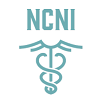Dystonia is a range of movement disorders characterized by involuntary, excessive muscle contractions that result in abnormal postures or repetitive movements. The American Association of Neurological Surgeons estimates the condition to affect around 1% or 250,000 people in the country.
While there is no known cure for dystonia, medication and surgery can help improve the symptoms. In this blog, we’ll discuss the symptoms and treatment of dystonia.
Types of Dystonia
Dystonia can affect a single or multiple parts of the body and is classified into the following categories:
- Focal Dystonia: Affects a specific part of the body
- Multifocal Dystonia:Affects multiple, unrelated parts of the body
- Generalized Dystonia:Affects a large part of the body or all of it
- Hemidystonia:Affects the leg and arm on the same side
- Segmental Dystonia: Affects adjacent body parts
Symptoms
Symptoms of dystonia range from mild to severe. Fatigue or stress can act as a trigger for the symptoms or make them worse. People with dystonia often complain of exhaustion and pain resulting from the constant muscle contractions. If the symptoms emerge during early childhood, it usually affects the feet or hands and then progressively spreads to the rest of the body.
If dystonia emerges during early adulthood, the symptoms progress slowly and are generally confined to the upper part of the body.
Treatment
People diagnosed with dystonia are prescribed a medication known as levodopa. It increases the levels of dopamine in the body. Initial reaction to the medication may include nausea, which disappears after prolonged use.
Botulinum toxin is an effective treatment that includes administering small doses to prevent neurotransmitters from reaching the muscles. This stops the spasms and keeps the symptoms under control. The treatment usually lasts around 3 months.
Muscle relaxants are also prescribed especially if other treatment methods fail to produce desired results. These increase the levels of gamma-aminobutyric acid and cause the muscles to relax. Medical experts also recommend physical therapy which helps improve posture.
If all else fails, doctors can also recommend surgery. Effective surgical methods for Dystonia include DBS or Deep Brain Stimulation. This treatment involves inserting tiny electrodes into a specific part of the brain to disrupt abnormal signals.

The effectiveness of treatments also depends on the experience and expertise of the doctor. Dr. Farzin Pedouim at Movement Help is a movement disorder specialist who provides dystonia treatment in Huntington Beach, Los Angeles.
Make an appointment at (949) 239-4410 or visit our website for more information.






